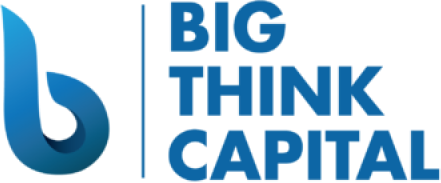Demystifying Fed Interest Rate Decisions: Practical Effects and Action Points for Small Business Financing in 2025
Estimated Reading Time: 6 minutes
- Understand key trends affecting small business financing.
- Explore real-world case studies illustrating the impact of interest rate changes.
- Implement actionable strategies to secure better financing terms.
- Monitor financial market indicators for smarter business decisions.
- Improve your business credit score to decrease borrowing costs.
Table of Contents
- Understanding the Fed’s Role in Interest Rates
- Case Studies on Rate Changes and Profitability
- Strategies for Securing Competitive Rates in a High-Interest Environment
- Monitoring Financial Market Indicators
- The Importance of Business Credit Scores
- Improving Your Business Credit Score: A Step-by-Step Guide
- Practical Takeaways for Business Owners
- Conclusion and Call to Action
Understanding the Fed’s Role in Interest Rates
The Federal Reserve (often referred to as the Fed) sets key interest rates that influence how much banks charge for loans. For small businesses, the Fed’s decisions can dictate everything from the cost of an SBA loan to rates on merchant cash advances.
Current Trends: In recent months, the Fed has cautiously adjusted interest rates in response to inflation and economic growth. Data from the Federal Reserve indicates that as of early 2025, the benchmark federal funds rate remains higher than it was in previous years, consistently ranging between 4.5% and 5.25% [source: Federal Reserve Economic Data].
Impact on Borrowing: Higher rates generally mean higher borrowing costs. For example, small businesses could see annual percentage rates (APRs) on loans increase, effectively raising their financial obligations.
Case Studies on Rate Changes and Profitability
To illustrate the practical impact of interest rate movements, consider the following case studies across different sectors:
- Retail Sector: A small retail shop, previously borrowing at an effective rate of 5%, now faces rates closer to 8%. This shift results in significantly higher monthly payments. For instance, a $100,000 loan could cost the owner nearly $30,000 more over five years due to increased interest payments resulting from current rate hikes.
- Construction Industry: A construction firm previously depending on equipment financing has seen their rate increase from 4% to 7%. This adjustment influences their ability to take on new projects; increased financing costs lead to tighter profit margins, potentially resulting in project delays or cancellations.
- Technology Startups: Startups often rely on working capital to maintain operations. The tech firm, which may have qualified for an MCA at a 15% interest rate a year ago, now faces rates pushing closer to 20%. This higher cost of capital can discourage innovation and expansion as companies weigh borrowing against their cash flow margins.
Strategies for Securing Competitive Rates in a High-Interest Environment
As the cost of borrowing rises, small business owners can benefit from proactive financial strategies. Here are several approaches to consider:
- Shop Around for Rates: Not all lending institutions will react uniformly to Fed rate changes. Take the time to compare offers from different lenders to secure the most favorable terms for SBA loans, equipment financing, and MCAs.
- Build Relationships with Lenders: Establishing strong ties with financial institutions can sometimes lead to better rates, especially if you have a proven track record of repayments. Consider maintaining ongoing communication with your funding experts at Big Think Capital to discuss future lending needs.
- Optimize Your Business Financial Profile: A strong financial profile can help in securing lower rates. This involves managing expenses wisely, maintaining healthy cash flow, and increasing sales revenue. Big Think Capital can assist you in analyzing your financial documentation and improving your creditworthiness.
Monitoring Financial Market Indicators
Staying ahead of rate changes involves understanding key economic indicators that may influence the Fed’s decisions. Here are essential indicators to watch:
- Inflation Rates: Tracking inflation can help gauge future interest rate changes. Higher inflation typically prompts the Fed to increase rates.
- Employment Data: A strong labor market and decreasing unemployment rates can fuel spending and economic growth, which the Fed may respond to with adjustments in interest rates.
- Consumer Confidence Index (CCI): This index reflects how optimistic consumers feel about the economy, impacting spending and investment behaviors.
The Importance of Business Credit Scores
Your business credit score plays a pivotal role in determining the interest rates available for loans. A stronger credit score can typically lead to more favorable rates, which is crucial in a high-interest environment. Factors influencing your score include:
- Payment history
- Credit utilization ratio
- Length of credit history
- Types of credit accessed
Improving Your Business Credit Score: A Step-by-Step Guide
Follow these actionable steps to enhance your credit profile:
- Pay Your Bills on Time: Timely payments can significantly boost your credit score. Implement a system to prioritize your payment schedules.
- Reduce Credit Utilization: Aim to utilize below 30% of your available credit. This shows lenders that you are responsible with borrowed funds.
- Regularly Check Your Credit Report: Obtain copies of your credit report and scrutinize them for inaccuracies. Dispute any errors you find.
- Establish a Diverse Credit Portfolio: Diversifying your credit types (e.g., lines of credit, loans) can positively impact your score.
- Engage with Credit Bureaus: Work proactively with credit bureaus to understand your profile and make improvements as needed.
Practical Takeaways for Business Owners
As we look forward in 2025, here are three critical takeaways:
- Understand the landscape: Keeping abreast of Fed interest rate decisions and economic indicators can help you make informed financing choices.
- Secure a monitoring system: Establish mechanisms to track changes in your credit score and consider consulting a professional service, like Big Think Capital, for assistance.
- Leverage relationships: Utilize your network of lenders to find competitive rates, stressing the importance of maintaining good financial health to bolster your borrowing power as rates fluctuate.
Conclusion and Call to Action
Navigating the complexities of small business financing in a high-interest climate can feel daunting. However, with the right knowledge and resources, securing funding tailored to your needs becomes much more achievable. At Big Think Capital, we are dedicated to helping small business owners understand and adapt to these changes, ensuring your venture can thrive despite economic challenges.
For personalized guidance on how you can secure the best financing options available, reach out to us today at bigthinkcapital.com or speak with one of our funding experts. Take control of your financial future now.
FAQ
How does the Fed’s interest rate impact my business loans? The Fed’s interest rate directly influences borrowing costs; higher rates typically mean higher loan costs for businesses.
What can small businesses do to prepare for rising interest rates? Small businesses can shop around for better rates, maintain good financial health, and build strong relationships with lenders.
How important is my business credit score? A strong business credit score can lead to more favorable loan terms, especially in a high-interest environment.






